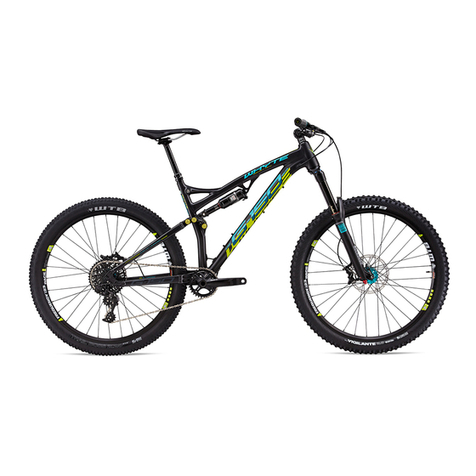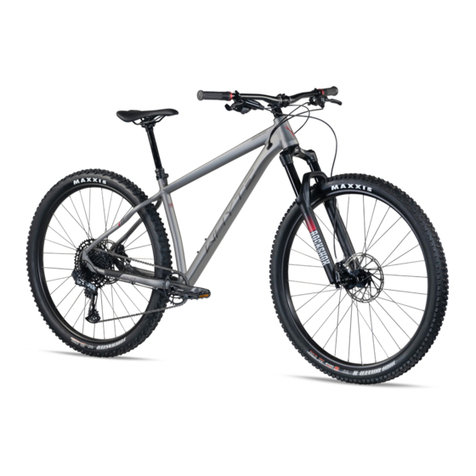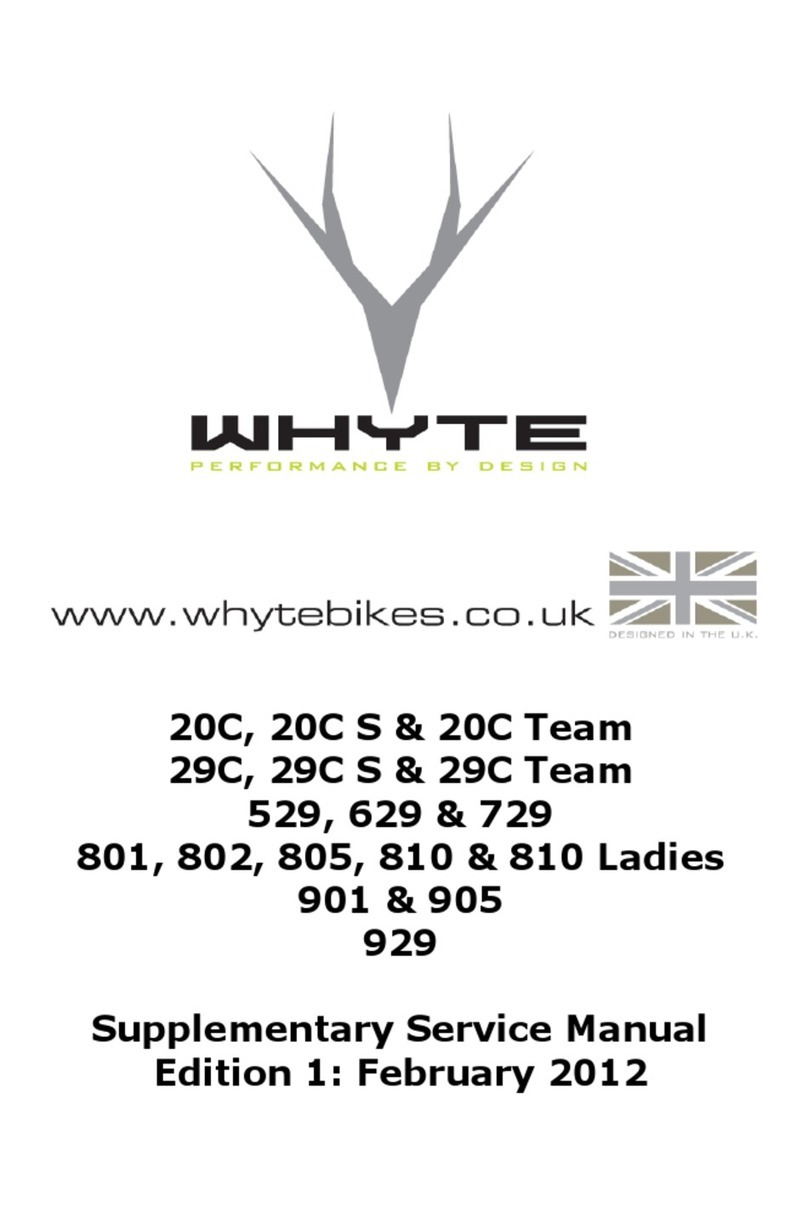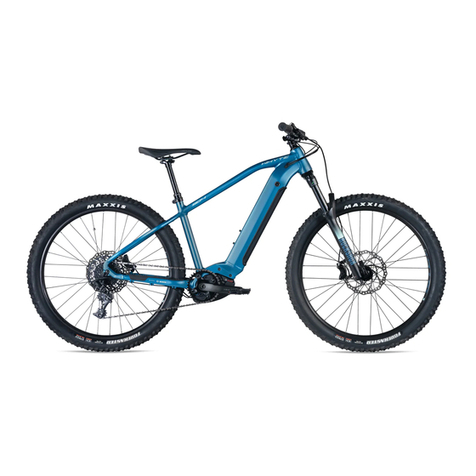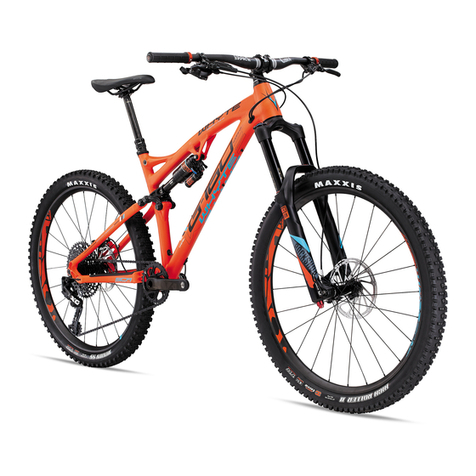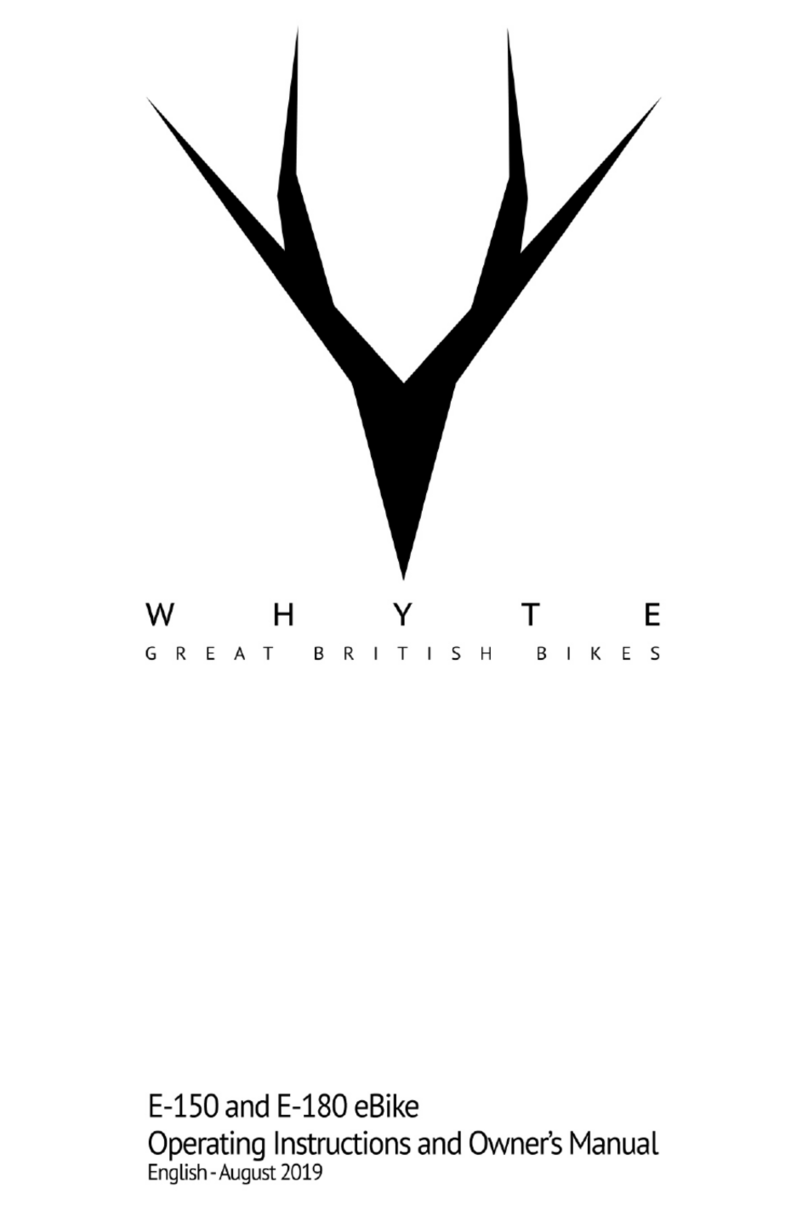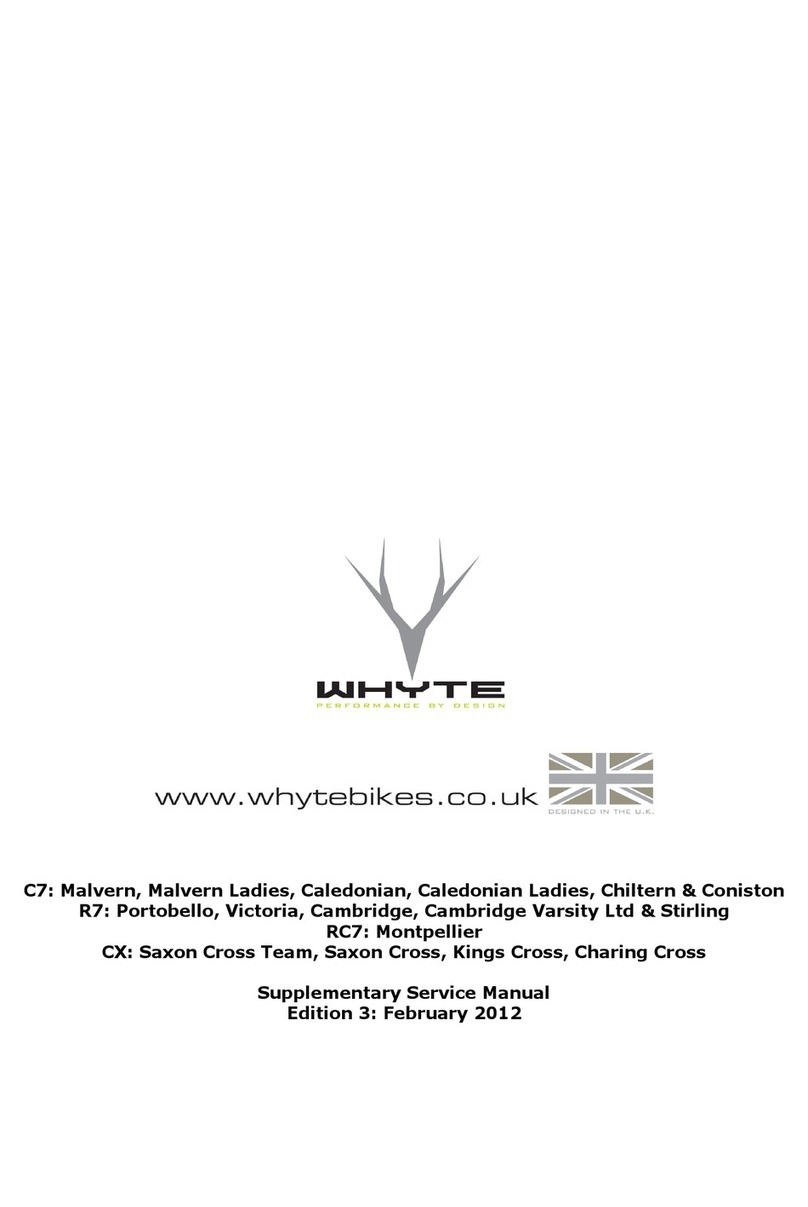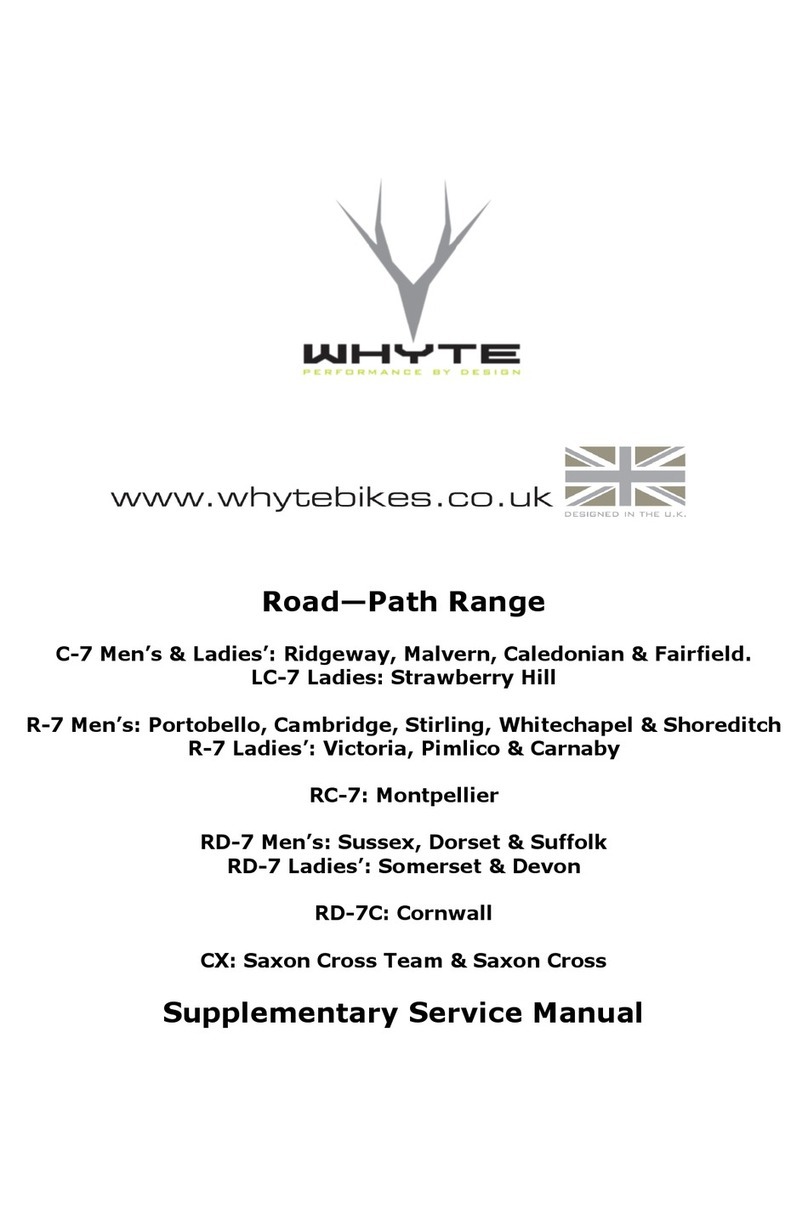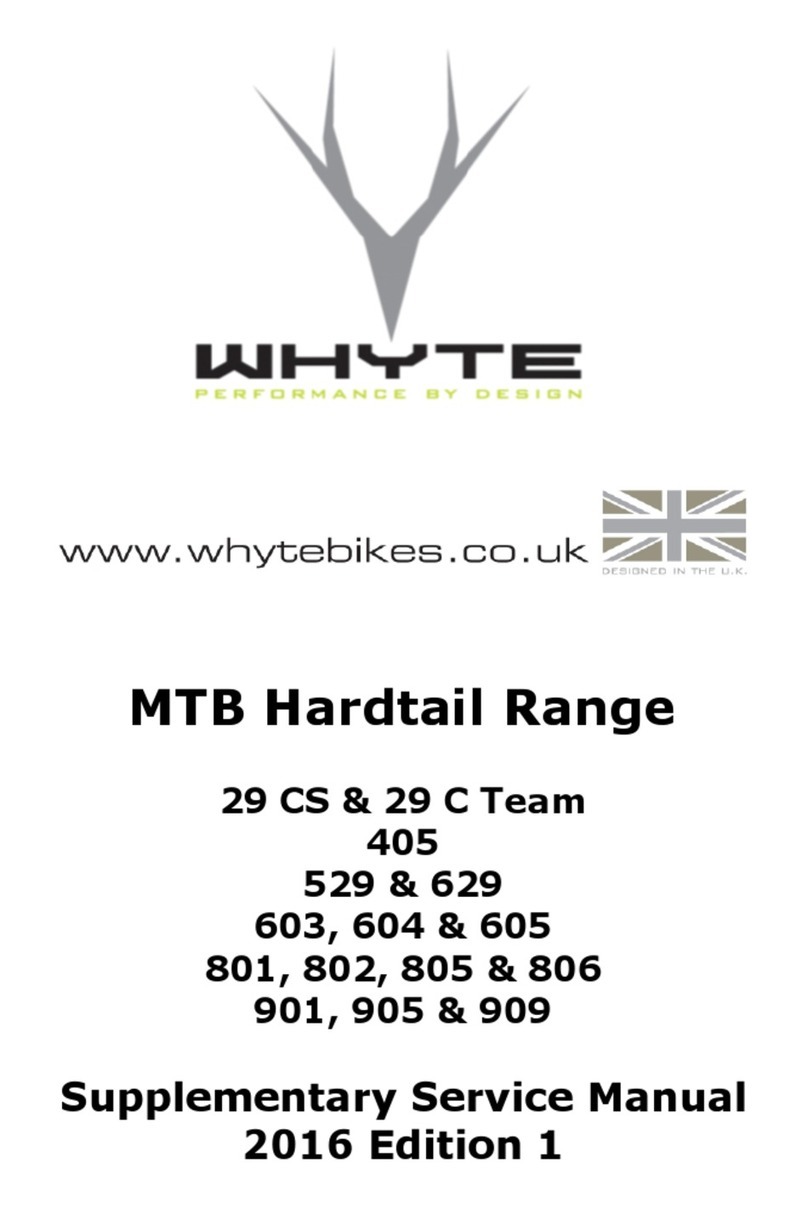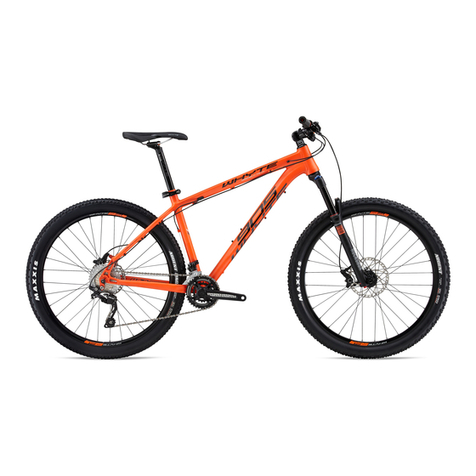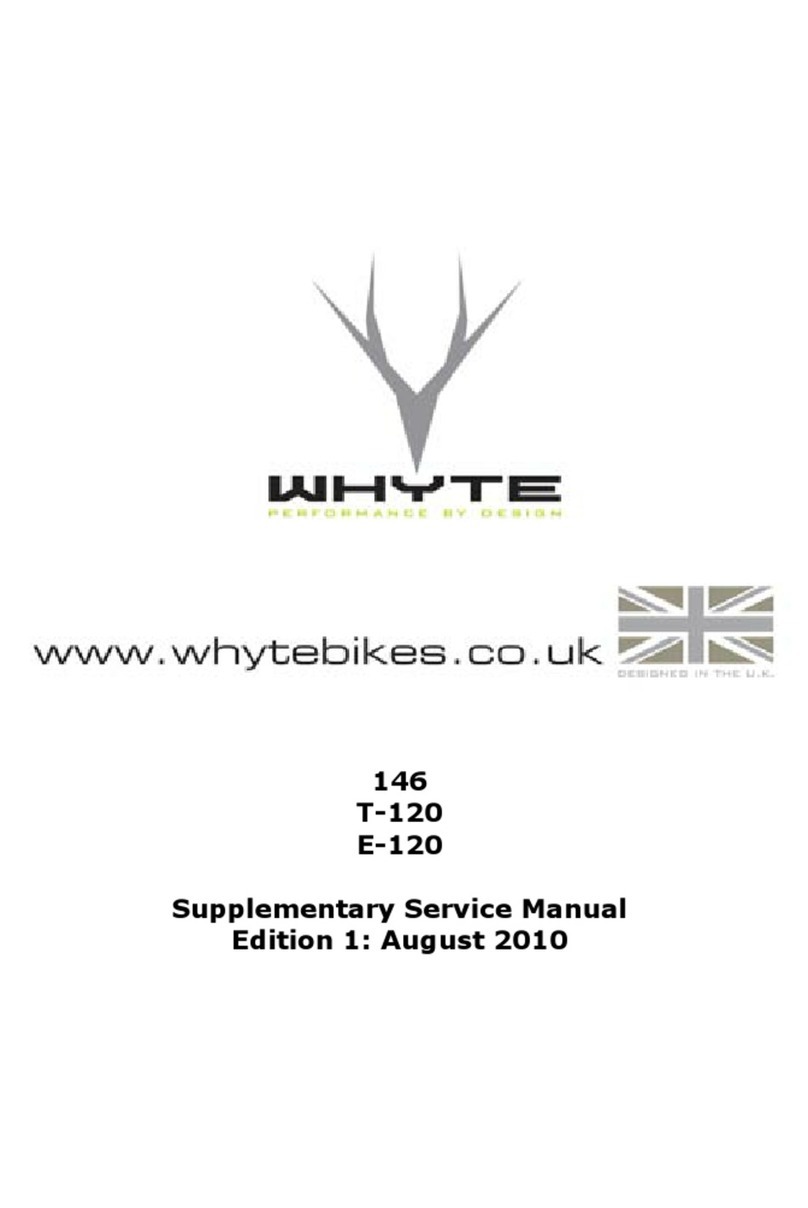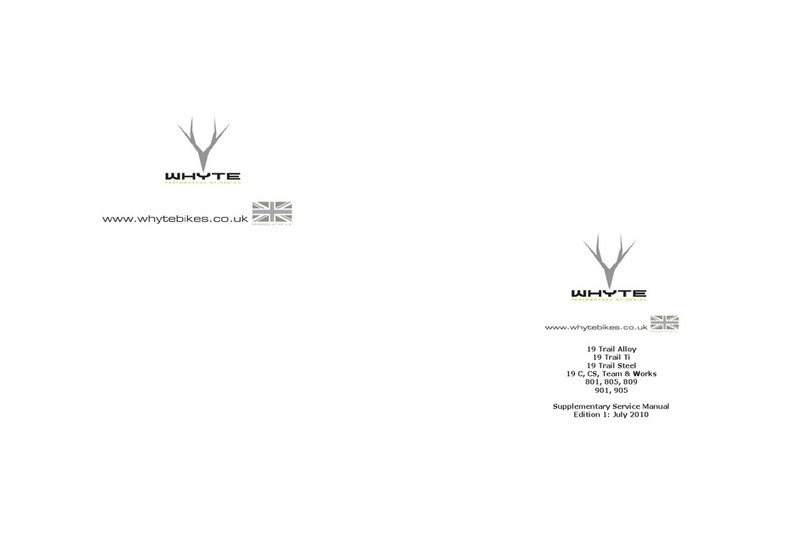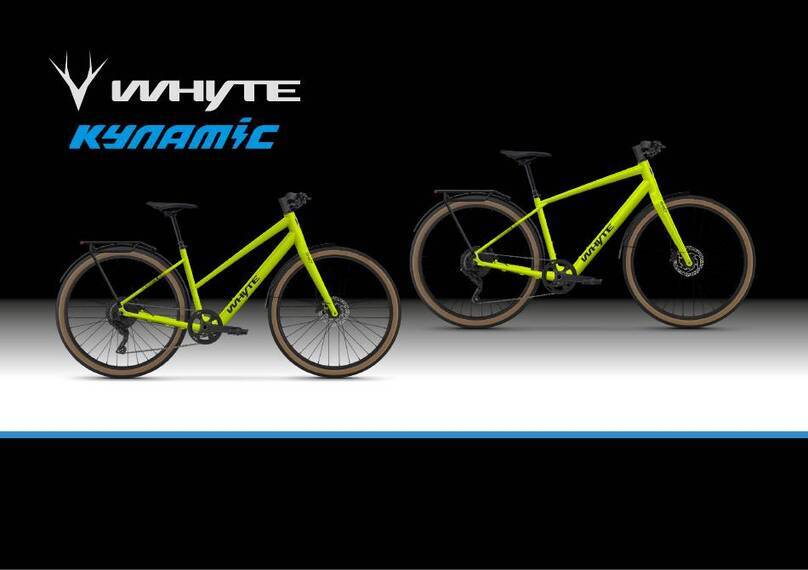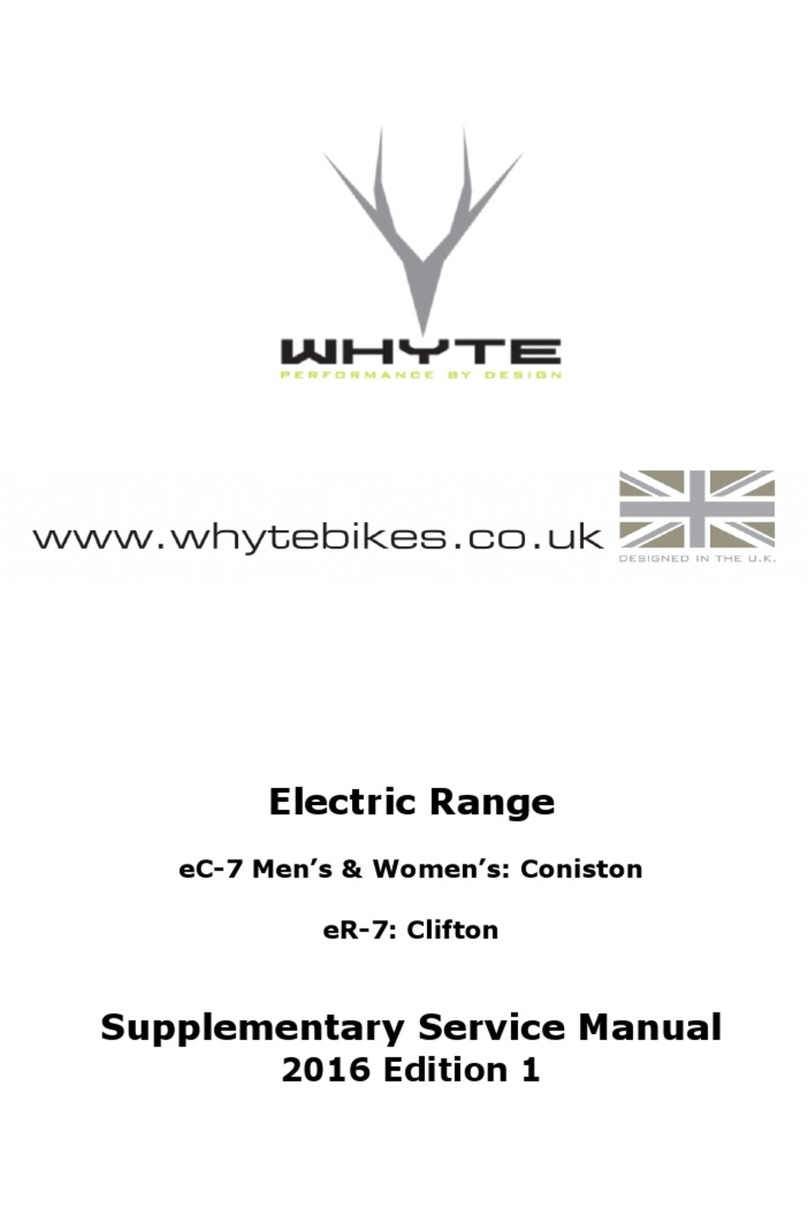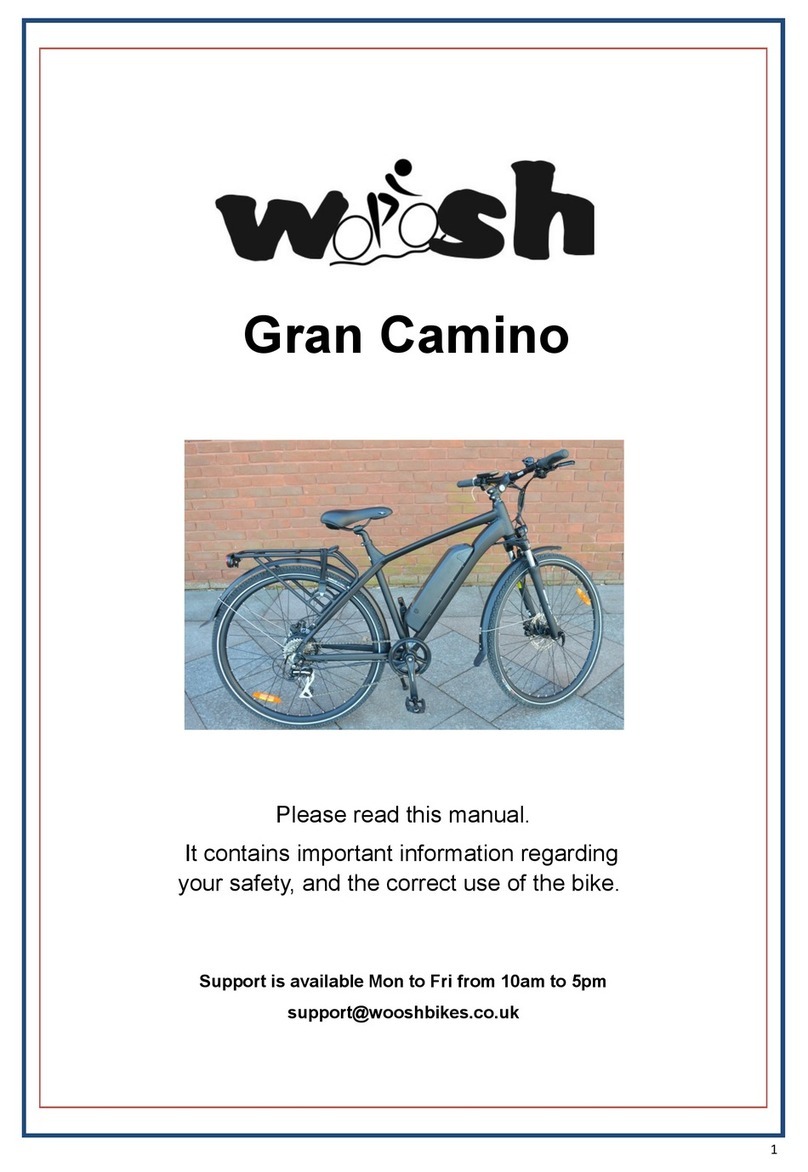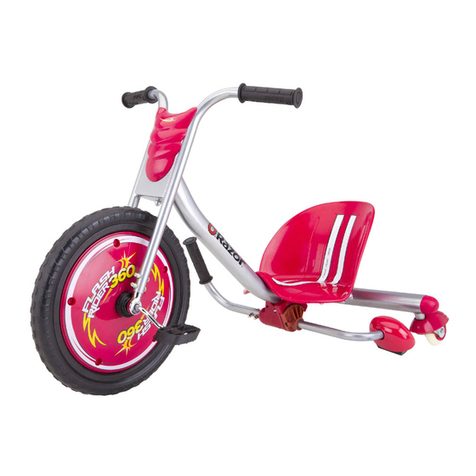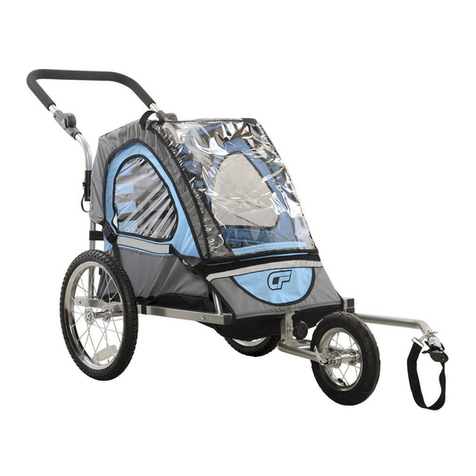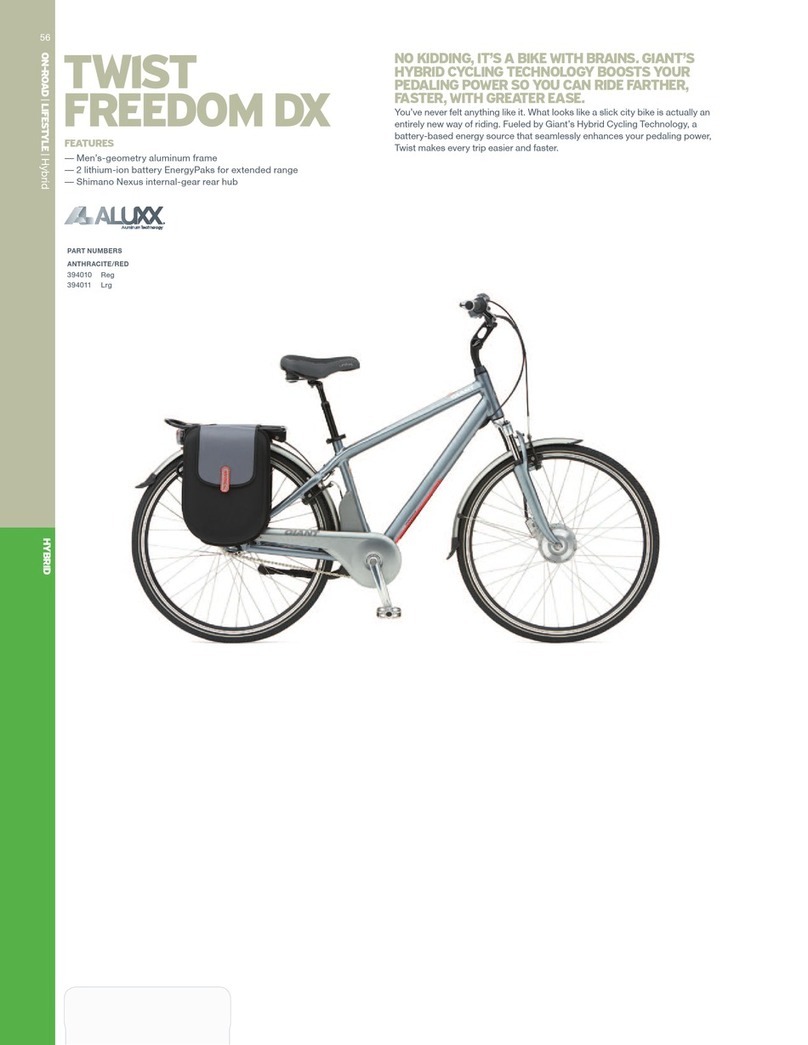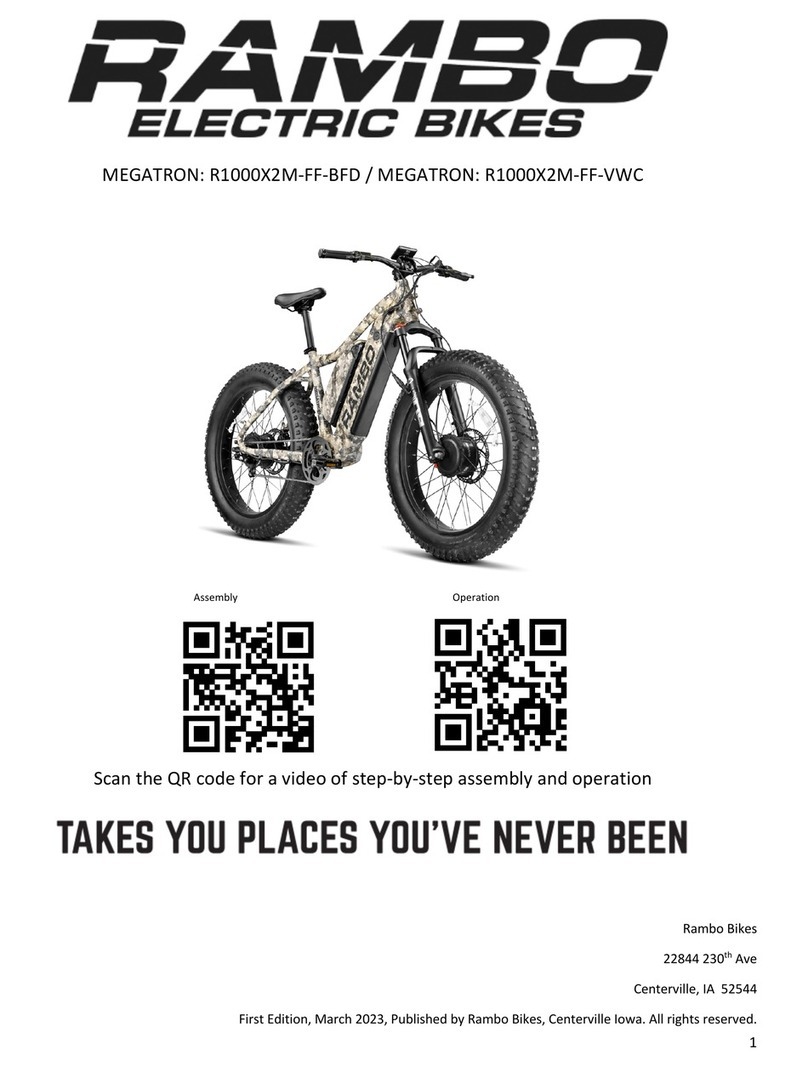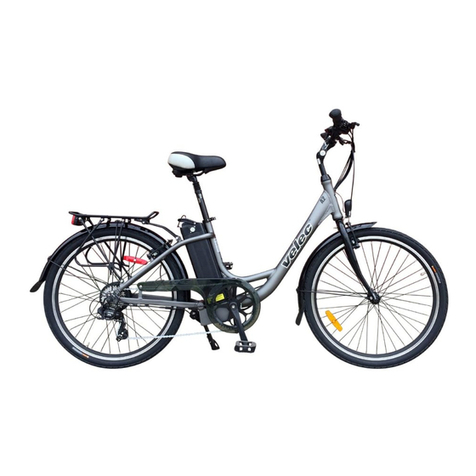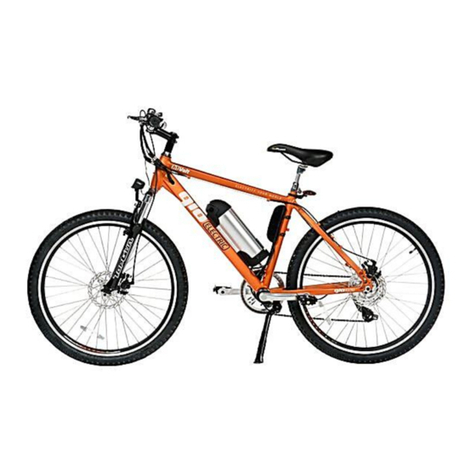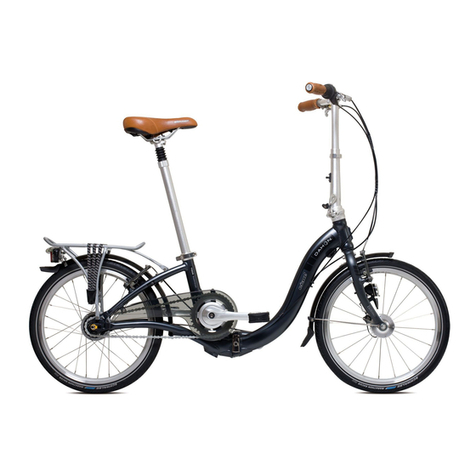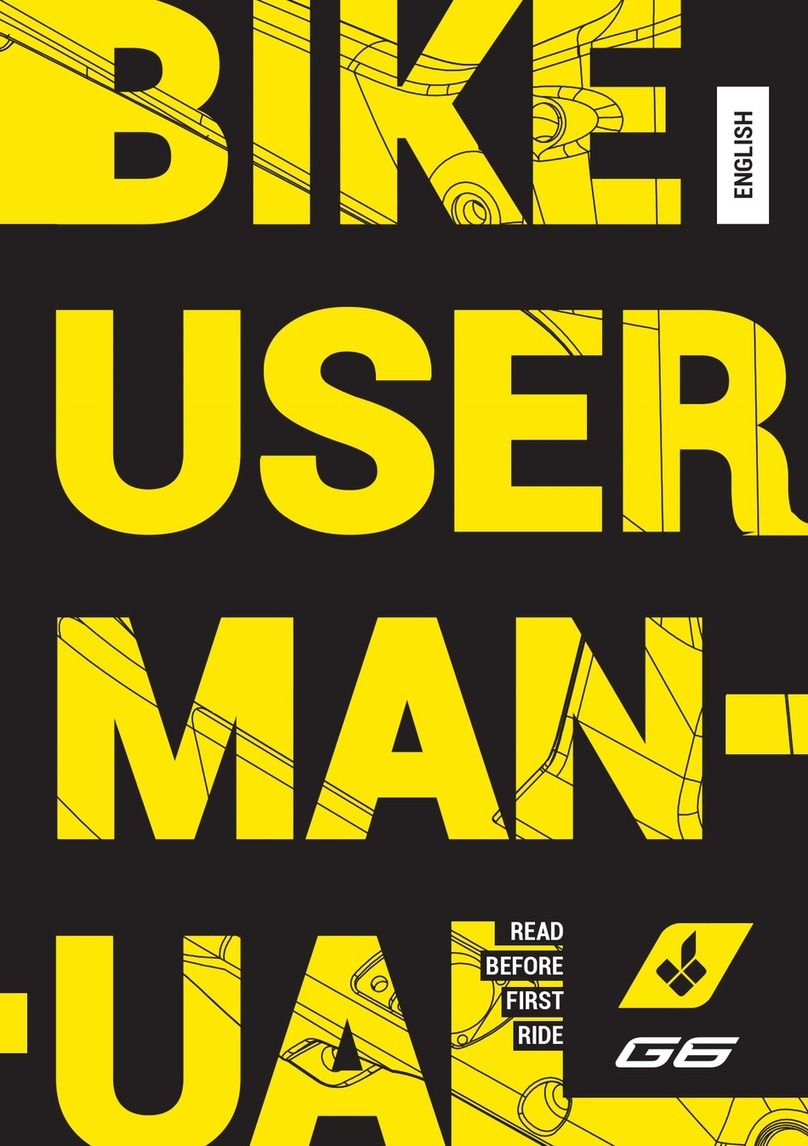
2019 Edition 1
Page 10
WHYTE Service Manual
5.3: GENERAL WHYTE LUBRICATION
For the correct lubrication regime and maintenance of all parts on a Whyte bicycle, please
refer to the specific component manufacturers detailed instructions bundled with this man-
ual or for further information visit the specific manufacturers website.
6.0 SERVICING:
6.1 Whyte Getta-Grip Seat Clamp
Reference figure 2 in Section 3.2.
Tools required: 1 off 2mm A/F Allen Key
To disassemble, first release the Quick Release (QR) Lever (3) and unscrew the Ad uster
(7) from the Stud (8). Withdraw the QR Lever assembly whilst holding the T-Pad (9) in
place, so that it doesn’t fall into the seat tube (5). Remove the Band (6) from the Seat
Tube (5). Remove the T-Pad (9) from the Seat Tube (5). To disassemble the QR Lever,
using the 2mm A/F Allen Key undo the Grub Screw (1) from the Lever Cam (2). The Stud
(8) may now be unscrewed from the Lever Cam (2).
6.2 Whyte Inter-grip 2 Seat Clamp
Reference figure 3 in Section 3.3.
Tools required: 1 off 5mm Allen Key,
1 off small flat-blade screwdriver
Undo the M6 Cap-screw (1) by 7 turns, then push it into the Plain Sleeve (4), so that the
Threaded Sleeve (2) is pushed out of the opposite end (left side of) the Main Frame (5).
Undo the M6 Cap-screw (1) completely from the Threaded Sleeve (2) and then pull that
Sleeve out of the assembly completely. Place the M6 x 30mm long Cap-screw (1) through
the hole in the left side of the Main Frame (5) & onto the Plain Sleeve (4). Then push the
Plain Sleeve (4) all the way out of the right side of the Main Frame (5).
The ‘O’ rings (3) may be removed from the Threaded Sleeve (2) and the Plain Sleeve (4),
using the small size flat-blade screwdriver.
To re-assemble the Inter Grip seat clamp, coat the ‘O’ rings (3) with a small quantity of
grease. Carefully fit the ‘O’ rings (3) into the grooves in the Threaded Sleeve (4) and the
Plain Sleeve (2). Also place some grease onto the threaded end of the M6 Cap-screw (1).
Place the Grip Pad (5) into the hole in the Main Frame (6) such that the curved face is to-
wards the seat tube in the Main Frame (6). Insert the Seat Post (not shown) to help align
the Grip Pad (4). From the left side of the Main Frame (6), insert the Plain Sleeve (2) and
make sure the 45° angled edge on the Plain Sleeve (2) touches the 45° angled edge on the
Pad (5). Move to the right side of the Main Frame (6) and insert the Threaded Sleeve (4),
aligning the 45° angled edge to touch the 45° angled edge on the Grip Pad (5). Place the
M6 Capscrew (1) through the Threaded Sleeve (4), the Pad (5) & screw into the Threaded
Sleeve (4).
Note: Both of the Sleeves (2 & 4) should be nearly flush with the edge of the hole in the
Main Frame (5) when the assembly goes tight. If this is not the case, one or other of the
